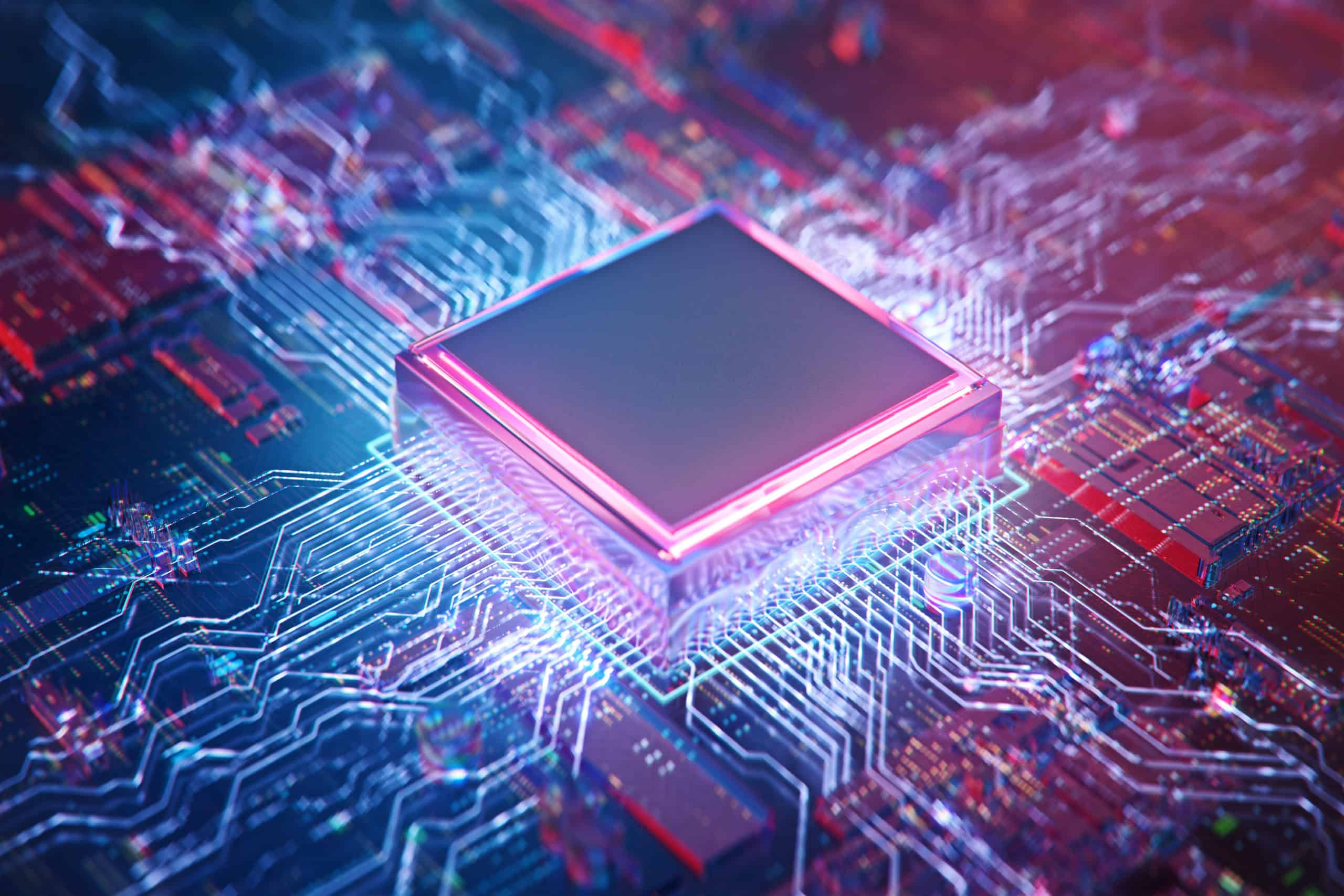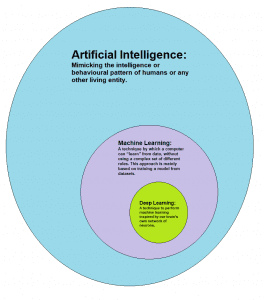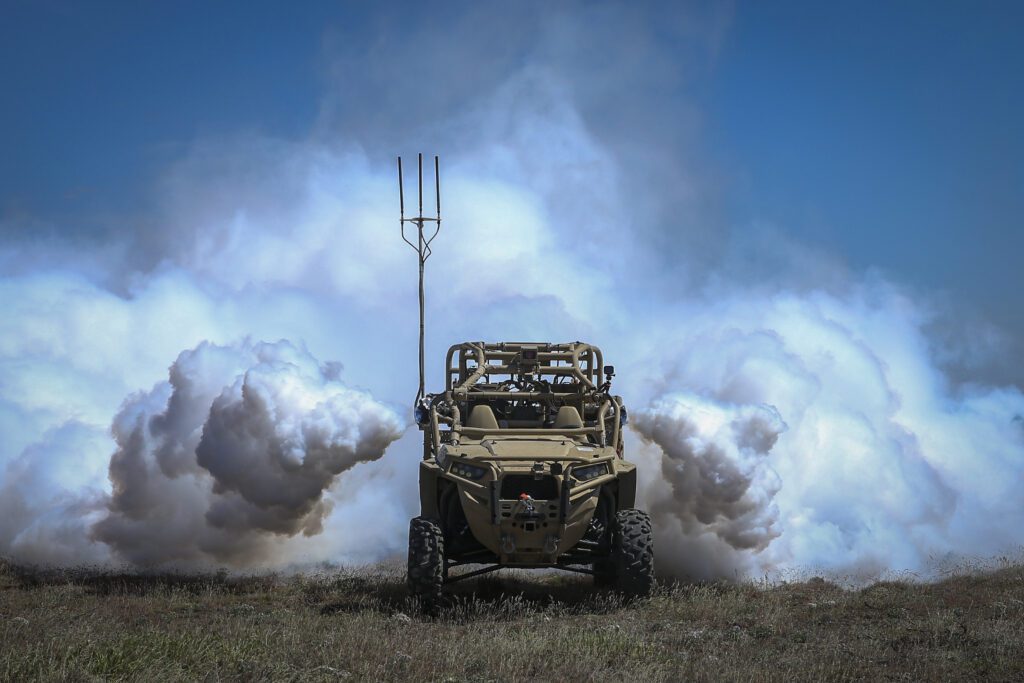Artificial Intelligence and Machine Learning Explained

Artificial Intelligence and Machine Learning Explained
Understanding the Distinction: AI vs ML
Artificial Intelligence (AI) and Machine Learning (ML) are two terms that often go hand in hand, sparking both curiosity and confusion among the tech industry. While both are essential components of the modern tech landscape, it’s crucial to understand their fundamental differences. Let’s dive into the contrast between AI and ML and better understand how they contribute to shaping our world.
The AI and ML Origin Story
In 1956, the Dartmouth Conference marked the birth of AI as a formal discipline. The term “artificial intelligence” was coined, and researchers gathered to explore the possibility of creating machines that could exhibit intelligent behavior. Early pioneers such as John McCarthy, Marvin Minsky, Allen Newell, and Herbert A. Simon laid the foundation for AI.
ML emerged as a subfield of AI in the 1960s, focusing on creating algorithms and models that enable computers to learn from data. The concept of “teaching computers to learn” gained attention, and researchers began exploring the idea of programming computers to learn and improve from experience. Early ML pioneers, including Arthur Samuel and Frank Rosenblatt, made significant contributions to developing the first ML algorithms and neural networks.
Over the following decades and through to today, both AI and ML have experienced periods of intense research and development/ Progress in AI and ML is driven by advances in computing power, availability of large datasets, algorithmic breakthroughs, and improved understanding of cognitive processes.
What is Artificial Intelligence?
AI is a broad field encompassing the development of computer systems capable of performing tasks that typically require human intelligence. It aims to simulate human cognitive processes such as reasoning, problem-solving, learning, perception, and decision-making. AI systems leverage algorithms and computational power to analyze vast amounts of data and make autonomous decisions or provide human-like responses.
What is Machine Learning?
ML, a subset of AI, focuses on the development of algorithms that enable computers to learn and improve from experience without being explicitly programmed. ML algorithms learn from data, identify patterns, and make predictions or take actions based on those patterns. Rather than following pre-defined instructions, ML algorithms adapt and improve over time as they are exposed to more data, enhancing their performance and accuracy.
We can go further down a level with the concept of Deep Learning (DL), which is a subset of ML. DL is a class of ML algorithms that uses multiple layers to progressively extract higher-level features from the raw input. For example, in image processing, lower layers may identify edges, while higher layers may identify the concepts relevant to a human such as digits or letters or faces.

How are AI and ML Connected?
ML serves as a foundational tool within AI, allowing AI systems to learn from data and make intelligent decisions. ML algorithms are often used to train AI models, analyzing vast amounts of data, recognizing patterns, and enhancing the performance of AI systems.
AI is the broader concept, while ML is an application of AI.

Check out our Industrial Autonomy white paper
Read the White PaperWhat’s the Difference?
Approach
- AI aims to create intelligent systems that can replicate human-like intelligence and behavior. It encompasses various techniques such as rule-based systems, expert systems, natural language processing, and computer vision. AI systems rely on both ML and other methodologies to achieve their objectives.
- ML focuses on developing algorithms that allow computers to learn from data and make predictions or take actions. ML algorithms use statistical techniques to analyze and interpret data, thereby enabling the system to improve its performance over time.
Human Intervention
- AI systems are often designed to operate autonomously and make decisions without human intervention. They can use various techniques like rule-based reasoning or natural language processing to interpret user input and generate responses.
- ML algorithms require human intervention during the initial stages of development. They depend on humans to train the models by providing labeled data for supervised learning or setting up reward systems for reinforcement learning. Once trained, ML algorithms can make predictions or perform tasks independently.
Data and Learning
- AI systems can work with or without data, depending on the specific application. Some AI systems are rule-based and rely on predefined rules, while others, like ML-based systems, require data to learn and make intelligent decisions.
- ML algorithms heavily rely on data for training and learning. They learn from examples or historical data to recognize patterns and make predictions or decisions. The quality and quantity of the training data significantly impact the performance and accuracy of ML models.
Scope
- AI encompasses a broad range of technologies and techniques beyond ML. It includes areas such as expert systems, robotics, natural language processing, computer vision, and more. AI seeks to develop intelligent systems that can mimic or surpass human capabilities in specific tasks
- ML, as a subset of AI, focuses specifically on developing algorithms and models that can learn from data. ML techniques are widely used in various applications, including image recognition, natural language processing, recommendation systems, fraud detection, an autonomous vehicles, among others.

Real-World Examples Unleashing the Power of AI and ML
From virtual personal assistants that can respond to human queries to autonomous vehicles navigating our roads, the realm of AI and ML is reshaping our world, and these technologies empower defense and industrial customers with advanced capabilities, improved efficiency, and enhanced security. Let’s take a look at some examples:
- Autonomous Drones for Surveillance (AI): These drones utilize AI algorithms to analyze real-time data from sensors, cameras, and other sources to detect and identify potential threats or anomalies. AI-powered drone systems can autonomously patrol and monitor designated areas, enhancing situational awareness and providing valuable intelligence for defense and industrial security.
- Cybersecurity and Intrusion Detection (ML): The DoD, Army, and Navy leverage ML algorithms for cybersecurity and intrusion detection purposes. ML models analyze network traffic patterns, system logs, and user behavior to detect anomalies or potential cyber threats. By continuously learning from new data and adapting to evolving attack vectors, ML-based cybersecurity systems provide enhanced defense against sophisticated cyber attacks and help protect sensitive networks.
- Intelligent Video Analytics (AI): Using AI techniques such as object detection, tracking, and behavior recognition, these systems can automatically detect and alert security personnel about suspicious activities, unauthorized access, or potential threats. Intelligent video analytics significantly enhances situational awareness and security in defense installations and naval vessels.
- Predictive Analytics for Maintenance (ML): By analyzing historical maintenance records, sensor data, and performance indicators, ML models can predict equipment failures and recommend optimal maintenance schedules. This proactive approach helps prevent unexpected breakdowns, increases operational readiness, and optimizes resources allocation in defense and military operations.
Kite-Strike II is a MIL-SPEC rugged edge AI compute solution, integrating the NVIDIA Jetson AGX Orin system on module.
See the product specsWhat’s Next?
AI has taken a massive leap forward in the past few months in the public consciousness with the rise of ChatGPT, with companies across seemingly all industries racing to adopt AI into their business operations and product offerings. Key AI focus areas include:
- Large language models (LLMs) are one of the most promising areas of AI research. LLMs are AI models that can process and understand human language at a level that was previously impossible. They are trained on vast amounts of text data and can generate text that is indistinguishable from human writing. LLMs can be used to develop natural language processing systems that can understand and respond to complex commands. Examples include OpenAI’s GPT-4, Google’s PaLM, and Meta’s LLaMA.
- Generative AI is another area of AI research that has seen significant progress. Generative AI refers to AI models that can create new content, such as images, videos, and text. Examples include Midjourney, Stable Diffusion, and Copilot.
- Artificial general intelligence (AGI) is another area of AI research that has the potential to revolutionize military and industrial autonomation applications. AGI refers to AI systems that can perform any intellectual task that a human can. For example, AGI could be used to develop autonomous vehicles that can navigate complex environments or develop intelligent robots that can perform a wide range of tasks.
The AI revolution is on our doorstep – are we ready?
Let's Talk!
Have questions or want to learn more? Contact our team and let’s talk!